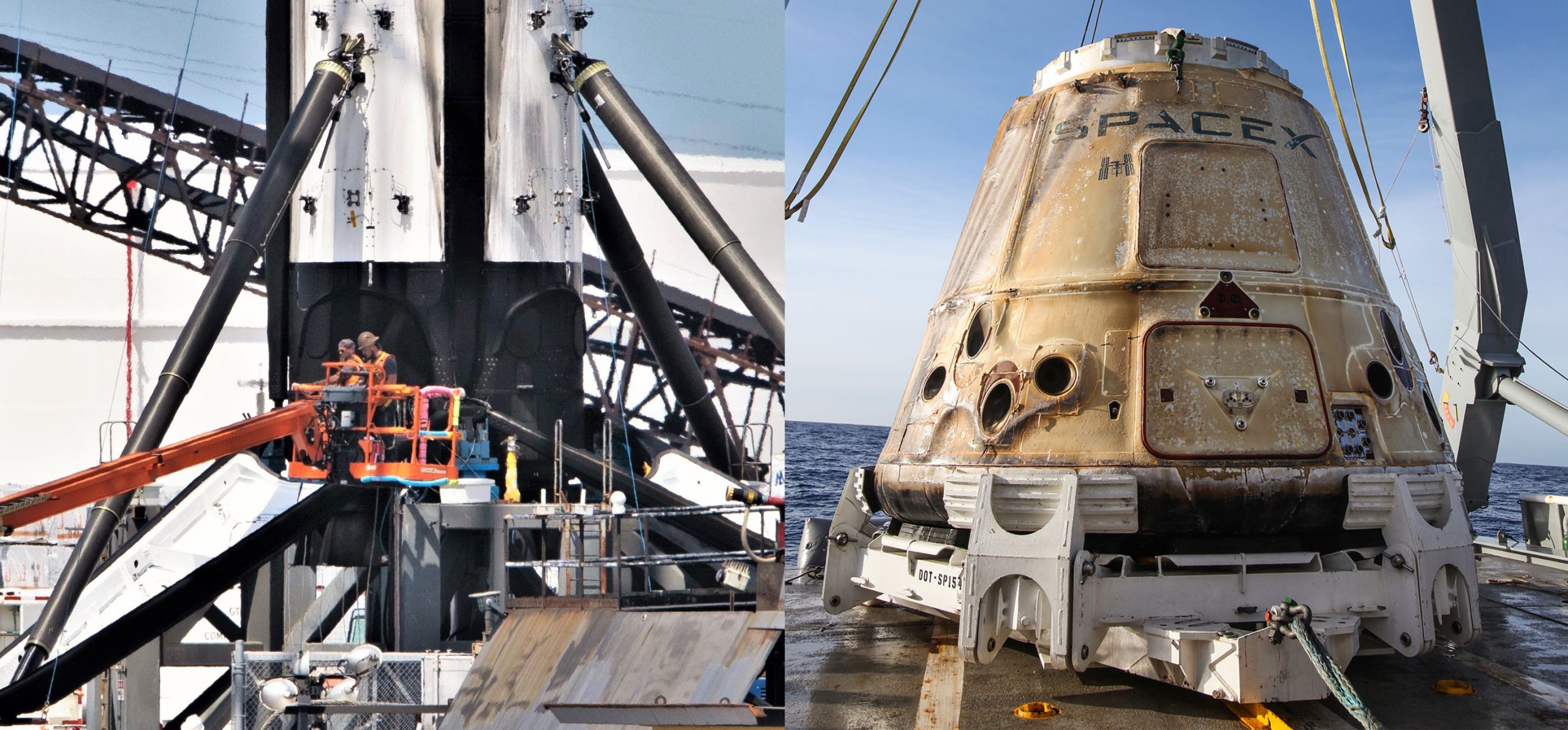
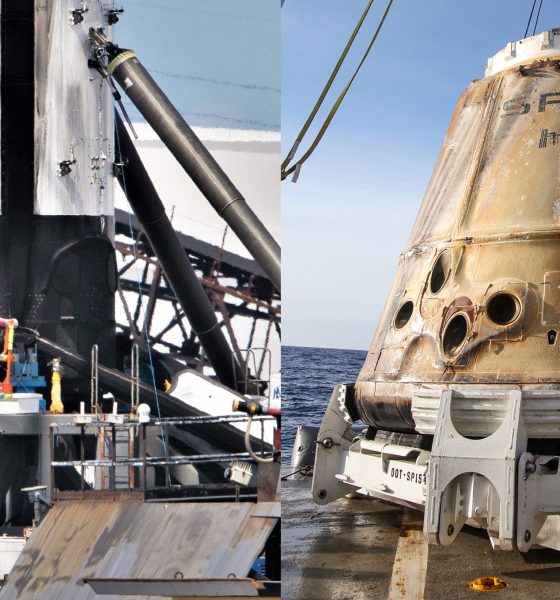
News
SpaceX set to deliver cargo to the space station with a twice-flown Dragon spacecraft
SpaceX is set to become the only company in history to launch the same commercial space capsule to orbit three times, a milestone of orbital spacecraft reuse in an otherwise ‘routine’ Cargo Dragon mission to the International Space Station (ISS).
Known as CRS-18, the mission will (hopefully) see Cargo Dragon capsule C108 and a fresh trunk deliver several tons of cargo to the ISS, SpaceX’s second of three such launches planned for 2019. Beyond Cargo Dragon’s third trip to orbit, building upon SpaceX’s inaugural commercial spacecraft reuse back in June 2017, Falcon 9 B1056.1 will become the first flight-proven Block 5 booster to launch a NASA mission, potentially setting the particular core up for many more NASA reuses to come. CRS-18 is scheduled to launch no earlier than (NET) 6:24 pm EDT (21:24 UTC), July 24th.
SpaceX reused one of its Cargo Dragon (Dragon 1) capsules for the first time in June 2017, becoming the first company in history to recover and reuse an orbital-class spacecraft, much like the company is about to become the first to reuse a commercial spacecraft twice. Speaking at the ISSR&D 2017 conference, SpaceX CEO Elon Musk noted that – despite the fact that it was the first time a commercial entity (including SpaceX) had reused an orbital spacecraft – the cost of refurbishing Cargo Dragon C106 was no less than 50% cheaper than building a new capsule.
The cost-effectiveness of Cargo Dragon reuse has likely only improved in the two years since that historic first, meaning that SpaceX’s ISS resupply runs likely feature some extremely healthy margins for the company. According to an exhaustive 2017 analysis of CRS costs, the total cost of a single Cargo Dragon resupply mission is likely ~$175M (FY19). (Zapata, 2017)
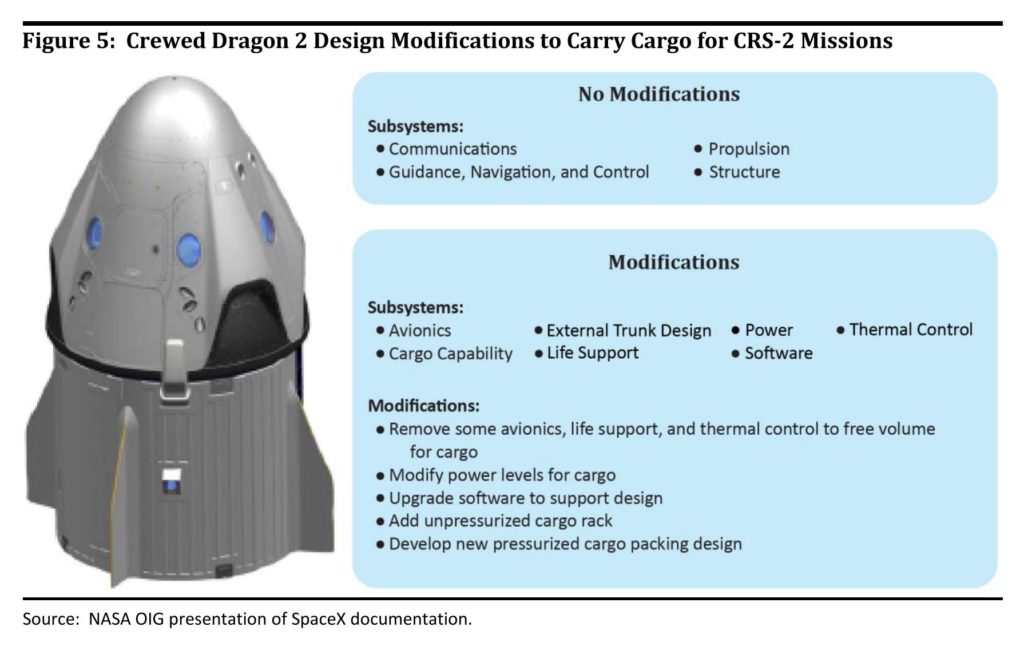
Aside from CRS-18, SpaceX has two Dragon 1 launches remaining in its original CRS1 contract with NASA. Both will also necessarily make use of twice-flown capsules like CRS-18, leaving SpaceX with a retired fleet of no fewer than three thrice-flown and three twice-flown orbital spacecraft as Dragon 2 (Crew Dragon) takes the reins. Current schedules show SpaceX’s final CRS1 launch – CRS-20 – following CRS-19 (NET December 2019) in March 2020. Cargo Dragon 2’s launch debut is currently scheduled no earlier than August 2020 and – as all Cargo Dragon 2 launches – will reuse a lightly-modified, orbit-proven Crew Dragon capsule.
CRS-18: bad weather in spades
CRS-18 will likely face some of the worst weather SpaceX has ever experienced during an attempted Falcon 9 launch, with July 24th and the July 25th backup window carrying probabilities of violation (i.e. a scrub) of 70% and 80%, respectively. In other words, there is a measly 30% and 20% chance that Falcon 9 will be able to launch CRS-18 this Wednesday or Thursday.
Supporting the Cargo Dragon launch is Falcon 9 booster B1056.2, likely to set the second-fastest Falcon 9 turnaround time with just 80 days between its May 4th launch debut and CRS-18. SpaceX’s turnaround record currently stands at 74 days – a three-way tie between boosters B1048, B1052, and B1053. Additionally, B1056’s second launch will also mark the first time that NASA has reused a Block 5 booster, an important indication that the space agency is extremely comfortable with SpaceX’s latest Falcon 9 variant and its associated reuse procedures.
Stay tuned as Falcon 9 prepares to go vertical at Cape Canaveral Launch Complex 40 (LC-40) and the Air Force Station’s final T-24h launch day weather forecasts begin to roll in
Check out Teslarati’s Marketplace! We offer Tesla accessories, including for the Tesla Cybertruck and Tesla Model 3.

News
Tesla Cybercab tests are going on overdrive with production-ready units
Tesla is ramping its real-world tests of the Cybercab, with multiple sightings of the vehicle being reported across social media this week.
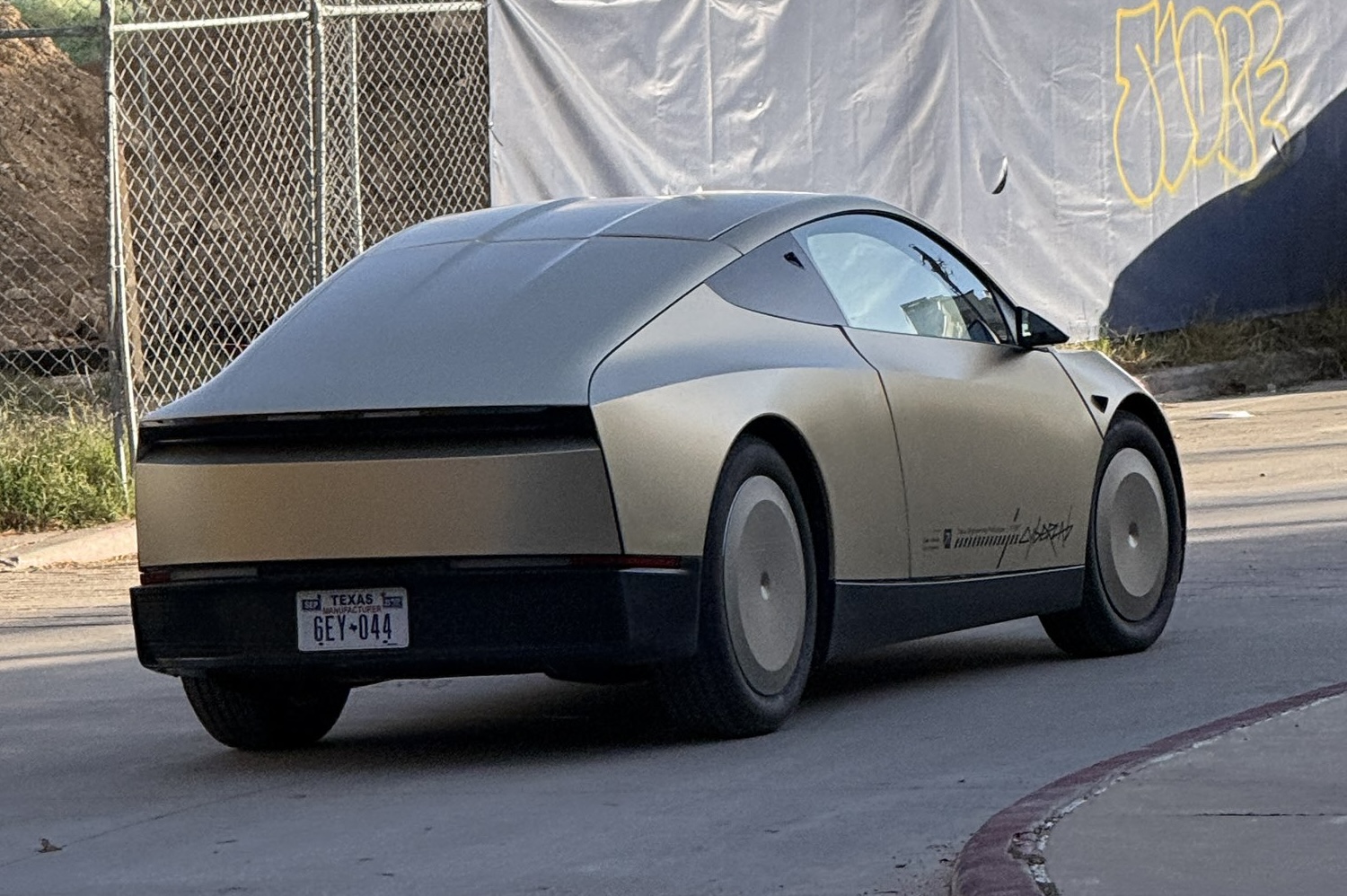
Tesla is ramping its real-world tests of the Cybercab, with multiple sightings of the autonomous two-seater being reported across social media this week. Based on videos of the vehicle that have been shared online, it appears that Cybercab tests are underway across multiple states.
Recent Cybercab sightings
Reports of Cybercab tests have ramped this week, with a vehicle that looked like a production-ready prototype being spotted at Apple’s Visitor Center in California. The vehicle in this sighting was interesting as it was equipped with a steering wheel. The vehicle also featured some changes to the design of its brake lights.
The Cybercab was also filmed testing at the Fremont factory’s test track, which also seemed to involve a vehicle that looked production-ready. This also seemed to be the case for a Cybercab that was spotted in Austin, Texas, which happened to be undergoing real-world tests. Overall, these sightings suggest that Cybercab testing is fully underway, and the vehicle is really moving towards production.
Production design all but finalized?
Recently, a near-production-ready Cybercab was showcased at Tesla’s Santana Row showroom in San Jose. The vehicle was equipped with frameless windows, dual windshield wipers, powered butterfly door struts, an extended front splitter, an updated lightbar, new wheel covers, and a license plate bracket. Interior updates include redesigned dash/door panels, refined seats with center cupholders, updated carpet, and what appeared to be improved legroom.
There seems to be a pretty good chance that the Cybercab’s design has been all but finalized, at least considering Elon Musk’s comments at the 2025 Annual Shareholder Meeting. During the event, Musk confirmed that the vehicle will enter production around April 2026, and its production targets will be quite ambitious.
News
Tesla gets a win in Sweden as union withdraws potentially “illegal” blockade
As per recent reports, the Vision union’s planned anti-Tesla action might have been illegal.

Swedish union Vision has withdrawn its sympathy blockade against Tesla’s planned service center and showroom in Kalmar. As per recent reports, the Vision union’s planned anti-Tesla action might have been illegal.
Vision’s decision to pull the blockade
Vision announced the blockade in early December, stating that it was targeting the administrative handling of Tesla’s facility permits in Kalmar municipality. The sympathy measure was expected to start Monday, but was formally withdrawn via documents sent to the Mediation Institute and Kalmar Municipality last week.
As noted in a Daggers Arbete report, plans for the strike were ultimately pulled after employer group SKR highlighted potential illegality under the Public Employment Act. Vision stressed its continued backing for the Swedish labor model, though Deputy negotiation manager Oskar Pettersson explained that the Vision union and IF Metall made the decision to cancel the planned strike together.
“We will not continue to challenge the regulations,” Petterson said. “The objection was of a technical nature. We made the assessment together with IF Metall that we were not in a position to challenge the legal assessment of whether we could take this particular action against Tesla. Therefore, we chose to revoke the notice itself.”
The SKR’s warning
Petterson also stated that SKR’s technical objection to the Vision union’s planned anti-Tesla strike framed the protest as an unauthorized act. “It was a legal assessment of the situation. Both for us and for IF Metall, it is important to be clear that we stand for the Swedish model. But we should not continue to challenge the regulations and risk getting judgments that lead nowhere in the application of the regulations,” he said.
Vision ultimately canceled its planned blockade against Tesla on December 9. With Vision’s withdrawal, few obstacles remain for Tesla’s long-planned Kalmar site. A foreign electrical firm completed work this fall, and Tesla’s Careers page currently lists a full-time service manager position based there, signaling an imminent opening.
News
Tesla Semi program Director teases major improvements
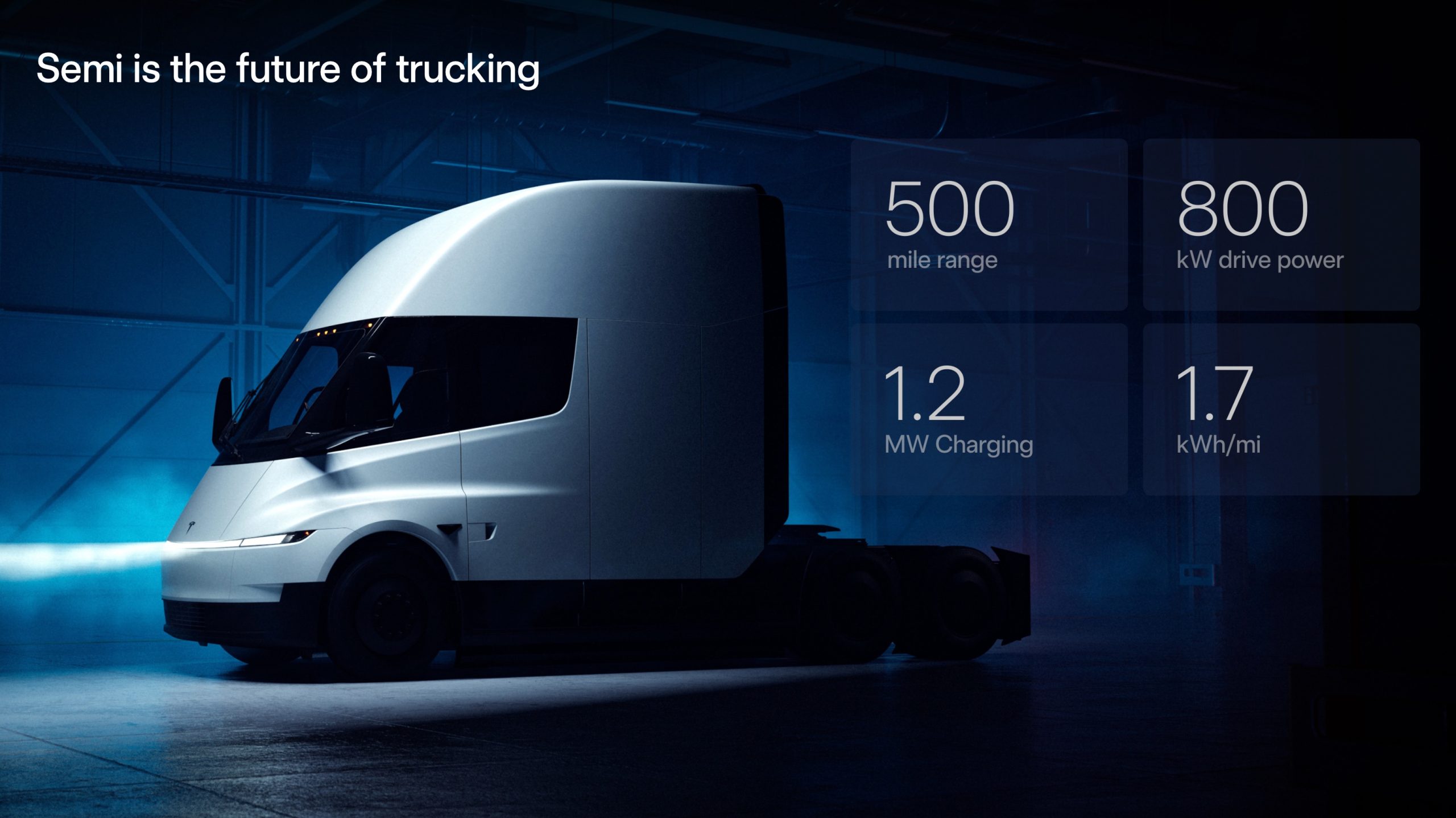
Tesla Semi Program Director Dan Priestly teased the major improvements to the all-electric Class 8 truck on Thursday night, following the company’s decision to overhaul the design earlier this year.
Priestley said he drove the Semi on Thursday, and the improvements appear to be welcomed by one of the minds behind the project. “Our customers are going to love it,” he concluded.
Just drove the redesigned Semi. Our customers are going to love it. https://t.co/KZ88sf1CDL
— Dan Priestley (@danWpriestley) December 19, 2025
The small detail does not seem like much, but it is coming from someone who has been involved in the development of the truck from A to Z. Priestley has been involved in the Semi program since November 2015 and has slowly worked his way through the ranks, and currently stands as the Director of the program.
Tesla Semi undergoes major redesign as dedicated factory preps for deliveries
Tesla made some major changes to the Semi design as it announced at the 2025 Annual Shareholder Meeting that it changed the look and design to welcome improvements in efficiency.
Initially, Tesla adopted the blade-like light bar for the Semi, similar to the one that is present on the Model Y Premium and the Cybertruck.
Additionally, there are some slight aesthetic changes to help with efficiency, including a redesigned bumper with improved aero channels, a smaller wraparound windshield, and a smoother roofline for better aero performance.
All of these changes came as the company’s Semi Factory, which is located on Gigafactory Nevada’s property, was finishing up construction in preparation for initial production phases, as Tesla is planning to ramp up manufacturing next year. CEO Elon Musk has said the Semi has attracted “ridiculous demand.”
The Semi has already gathered many large companies that have signed up to buy units, including Frito-Lay and PepsiCo., which have been helping Tesla test the vehicle in a pilot program to test range, efficiency, and other important metrics that will be a major selling point.
Tesla will be the Semi’s first user, though, and the truck will help solve some of the company’s logistics needs in the coming years.








